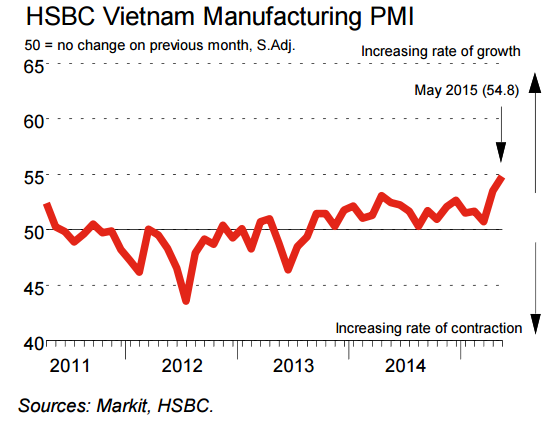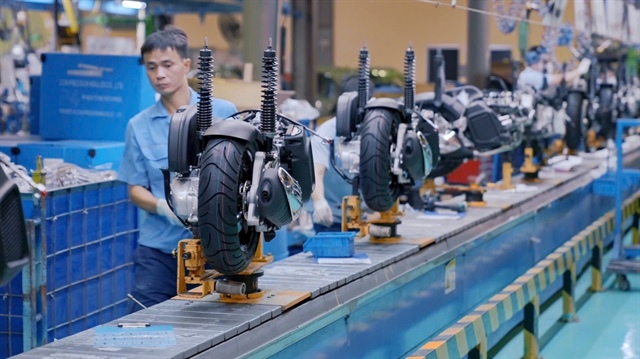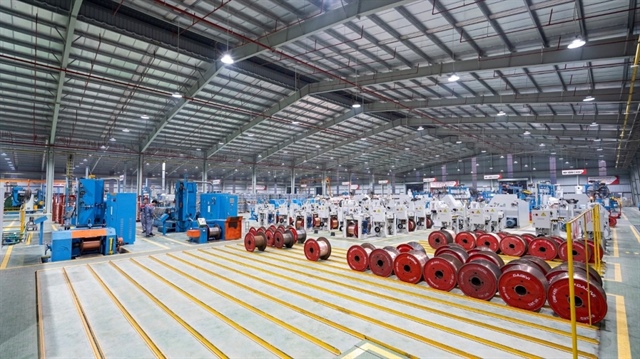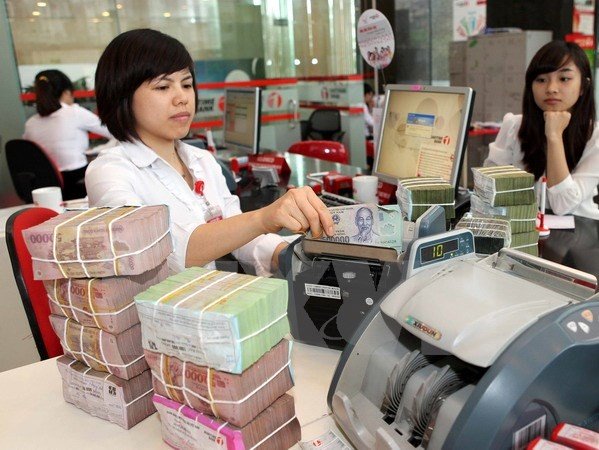Output rises sharply amid record growth of new work
Output rises sharply amid record growth of new work
Growth in the Vietnamese manufacturing sector gathered pace in May, with rising client demand leading to record growth of output and new orders. The rate of job creation also picked up pace during the month. Meanwhile, input costs increased for the first time in seven months, but firms continued to lower their output prices.

The headline seasonally adjusted Purchasing Managers’ Index™ (PMI™) – a composite indicator designed to provide a single-figure snapshot of operating conditions in the manufacturing economy – rose for the second month running to 54.8 in May, from 53.5 in April. The marked improvement in operating conditions signalled by the latest reading was the strongest since the series began in April 2011. Business conditions have now improved in each of the past 21 months.
Central to the marked strengthening of the sector’s health was a record increase in new business. Respondents indicated that the rise mainly reflected a greater need for products among customers. New export orders also rose, albeit at a much weaker pace than seen for total new business.
As client demand increased, manufacturers raised production accordingly. As a result, output increased for the twentieth month in a row, and at the strongest pace in the series history.
Firms were able to increase output partly as a result of a second successive month of job creation in May. Employment rose solidly, and at the sharpest pace since January. There was still evidence of pressure on capacity in the latest survey, however, as backlogs of work accumulated for the first time in five months. Panellists largely attributed higher outstanding business to sharp growth of new orders.
After having fallen in each of the previous six months, input costs at Vietnamese manufacturing firms rose. Higher oil and electricity prices, as well as a weakening
of the Vietnamese dong against the US dollar, were mentioned by respondents as factors leading input costs to increase. That said, the rate of inflation was relatively modest and firms continued to lower their output prices amid competitive pressures. Charges have now decreased in each of the past eight months.
Rising production requirements led manufacturers to increase their input buying. Purchasing activity expanded sharply, and at the fastest pace in the series history. This contributed to a second successive monthly accumulation of stocks of purchases, with the expansion also the fastest recorded in just over four years of data collection so far.
Suppliers’ delivery times lengthened marginally as panellists mentioned limited stock holdings at vendors. This was despite some reports that quick payments had
led to faster deliveries. Delays in the dispatch of products to clients contributed to an accumulation of stocks of finished goods in May, while strong output growth was also cited as a factor leading to increased post-production inventories.
Commenting on the Vietnam Manufacturing PMI™ survey, Andrew Harker, Senior Economist at Markit said: “The Vietnamese manufacturing sector gained further momentum in May and growth rates are now the best we have seen in the four years of data collection so far.
“Central to the recent success of firms in Vietnam has been their ability to secure new work in a competitive environment, and the recent 1% devaluation of the dong
against the US dollar by the State Bank of Vietnam should help efforts to maintain international competitiveness. On the other hand, some firms did report a rise in costs as a result of the weaker currency




















